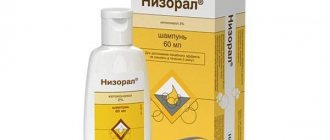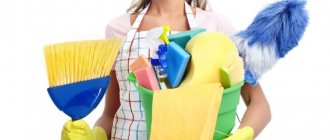Should you accustom your child to a pacifier?
Experts do not have a clear opinion on the use of pacifiers. Some point out the negative aspects, while others recommend accustoming the child to a pacifier. If pacifiers are strictly prohibited, it is very likely that the little one will begin to suck his finger, and this situation will arise as soon as he can reach his mouth with his hand.
This is due to the dissatisfaction of the sucking reflex, which is absolutely natural for infancy; the instinct passes without any help when the child reaches a certain age. A baby puts his finger in his mouth not out of great desire, or even out of idleness. This is a reflex, and there is no reason to resist it.
Moms and dads whose babies are accustomed to a pacifier consider it a panacea for all ills under certain circumstances. The pacifier gives the baby pleasure, activates the sucking reflex and helps the baby quickly calm down. When other methods don't produce the desired results, a pacifier can be a great solution.
There is also a side effect - the baby will quickly get used to it. Another feature is that the longer the child spends with the pacifier, the more difficult and painful the process of weaning off it will be. Otherwise, the pacifier is a very useful and necessary invention; use it correctly, and a positive result will not be long in coming.
Situations when you need a pacifier
A pacifier becomes a necessity for a child mainly in stressful situations: a visit to the doctor, a car trip, long preparations before a walk and undressing after it.
The pacifier distracts, relaxes and calms the baby. It can be given to the baby before bed instead of prolonged rocking on the arms or on a fitball. It is enough to put the little one in the crib, cover it with a blanket and offer a pacifier. But don’t leave right away: the child should be calm that you are nearby—pat him on the back until he falls asleep.
The pacifier will help parents out during colic periods. It has been established that when sucking it, saliva is formed, which stimulates the intestines and facilitates the passage of gas.
If your baby constantly sucks his thumb, it is better to offer him a pacifier. Firstly, it is more hygienic, and secondly, it is easier to remove it from the mouth.
If the baby has eaten, but cries when trying to remove the breast or bottle, then the sucking reflex may not be satisfied. Try giving him a pacifier for a while.
In flight. Sucking will reduce anxiety and relieve ear pain.
When swimming. The mouth will be busy and the baby will not choke.
Video: Dr. Komarovsky’s opinion - does a child need a pacifier and in what cases
A well-known pediatrician briefly and clearly explains in what situations the use of a pacifier is justified. It’s especially interesting about swimming in the bathtub - indeed, to prevent your baby from swallowing water, you couldn’t find a better device!
When is the use of a pacifier necessary?
The truth of life is that you cannot use a pacifier all the time.
Let us list the situations in which the pacifier is a helper and friend:
- Sucking in an infant is a reflex that relaxes and allows you to calm down. Sucking helps you fall asleep easily and quickly. Its use before bed is more than rational.
- The procedure of dressing, as a rule, does not bring pleasure to any child; this procedure before a walk causes hysterics. Here the pacifier again acts as a lifesaver; besides, it will not be superfluous during a walk.
- Sometimes a young mother needs to visit a hospital or other institutions; queues there are the norm, and a long wait will irritate even the most patient baby; take a pacifier with you, it will help in this situation too.
- Exhaustive trips and travel are cases when using a pacifier will be the right solution.
How to choose the best orthodontic pacifier for your baby?
There are a huge number of pacifiers on the market today.
There is no ideal product that would suit absolutely everyone.
Therefore, when choosing, it is necessary to take into account various parameters.
Material
If previously almost all nipples were made of rubber, today this material is almost a thing of the past. To make modern pacifiers, medical silicone and latex (natural rubber) can be used. Each material has its own characteristics, as well as advantages and disadvantages.
Silicone products
Positive sides
- Do not deform under the influence of high temperatures;
- retain their shape for a long time;
- have no foreign tastes or odors;
- hypoallergenic;
- durable.
The main disadvantage of silicone pacifiers is that they are quite easy to bite through. Therefore, if the baby has already developed teeth, the pacifier will have to be changed more often.
Latex products
Positive sides
- The softness makes the pacifier suitable for babies in the first months of life, as well as premature babies;
- elastic structure;
- durable material that is much more difficult to bite through, so it is recommended to give such pacifiers to a child after teething.
Flaws
- They have a specific taste and aroma, which not every baby accepts (sometimes you can get rid of it by boiling it in milk);
- may cause an allergic reaction;
- Silicone analogues react worse to thermal effects: they lose their shape and begin to stick together;
- darken when exposed to sunlight;
- become deformed after prolonged use;
- less durable than silicone.
Shape and size
Before choosing a pacifier, pay attention to the shape of the disc
- The heart-shaped disc is ideal for forming a correct bite;
- “butterfly” gives maximum convenience and comfort, especially when the child lies on his stomach;
- The cherry pacifier is the best solution for a baby with a big palate.
When it comes to pacifier size, it is important to consider the age of the child. There is a generally accepted classification that you need to focus on when purchasing
- Category A – for children from birth to six months;
- category B – from 6 to 18 months;
- category C – for babies after 18 months.
Some companies produce pacifiers for the smallest, then the following classification is used:
- pacifiers for prematurely born babies whose weight does not exceed 1.8 kg;
- up to 3 months;
- from 3 to 6 months;
- for babies over 6 months.
It is important to understand that these age limits are designed for the average child. If the baby develops faster or slower than his peers, it is necessary to choose a product based on individual characteristics
A properly selected pacifier does not jump out of the mouth and does not complicate the breathing process. The mouthpiece should fit tightly to the lips. An important element of any pacifier is the ventilation holes, which promote air circulation and prevent the accumulation of saliva. Sleeping pacifiers have a soft ring or are available without one at all, so that the baby does not experience discomfort while resting.
Color
The modern market offers a wide range of different pacifiers: plain, colored, bright, transparent. All this makes the product original and interesting. It won't be difficult for parents to choose what they want.
In addition to the listed features, pay attention to the strength and elasticity of the pacifier. It should not be damaged by stretching
A good pacifier quickly restores its shape after external influence. There are products with additional functions, such as pacifier thermometers or dispensers for administering medications. Whether these options are needed is up to you to decide. If you decide to purchase such a pacifier, be prepared that it will cost more than its primitive analogues.
Why do babies not take a pacifier when breastfeeding?
Babies who have been breastfed for a long time (over a year) will most likely refuse the pacifier altogether. This is easily explained - the mother's breast is more comfortable, warm and always at hand. At the same time, as the child grows older, he feels this difference more and more, and the pacifier in this case will be superfluous.
However, many young mothers, for one reason or another, are forced to give up breastfeeding early. The reasons for this are varied: maternal health problems; decrease in the amount or absence of breast milk; financial difficulties. In these circumstances, the child has to be switched to artificial nutrition, while he eats from a bottle and a nipple, which is an acceptable solution for him.
Pros of using a pacifier
Let's take a closer look at what positive aspects there are in teaching a child to suck a pacifier:
- A baby accustomed to the pacifier, without long and exhausting rocking, can fall asleep on his own. This is positive, since not every mother has helpers, and she herself cannot devote several hours a day for the child to go to bed. The pacifier helps the baby calm down and fall asleep on his own, without the help of adults.
- The pacifier helps solve the problem of gas accumulation in the baby, since sucking activates the functioning of the intestines.
- Having a pacifier in the baby's mouth while walking will reduce the likelihood of foreign objects getting into the mouth.
- A properly chosen pacifier helps promote a healthy bite.
- A pacifier is an indispensable means of calming a baby in a variety of situations, including extreme ones.
- Another advantage of a pacifier is that any adult, or even older children, can give it to a child - this will not affect its effectiveness in any way.
- Active sucking promotes good development and proper formation of facial muscles.
- The pacifier helps the baby develop skills such as attentiveness and the ability to concentrate, which will be useful in the future for the learning process.
Disadvantages of using a pacifier
However, along with the obvious advantages, there are also disadvantages to pacifier training, they are listed below:
- Weaning off the pacifier is a difficult and very painful process for the child. This can negatively affect the baby’s fragile psyche, and even a nervous breakdown is possible.
- A newborn, accustomed to sucking a pacifier, overly focuses their attention on the sucking process, and for the full development of the baby, it is necessary to pay more attention to the world around him and the study of available objects.
- A child who sucks excessively on a pacifier later begins to talk and has difficulty pronouncing some sounds.
- Toddlers, accustomed to the pacifier, over time can transfer the reflex to surrounding objects - fingers, toys. Moreover, it is even more difficult to get rid of this habit than from sucking a pacifier.
Doctor Komarovsky's opinion
Feedback from pediatrician Komarovsky E.O. regarding how to teach a child to suck a pacifier and whether this is necessary, is as follows: “When choosing between a pacifier and a finger, the advantages of the first are obvious, and the possible harm is significantly exaggerated. There is no need to teach it, if the child does not accept the pacifier, then parents should not be particularly worried about this. However, this is not recommended for breastfed children. In addition, there are many other equally authoritative doctors who claim that sucking a pacifier is even harmful. Well, you need to choose the “golden mean”; the baby perceives the pacifier - excellent, ignores it - also good. A child by nature has the ability to correctly determine whether he needs it or not!”
Some pediatricians cite the nipple as a negative factor - a decrease in the amount of breast milk in the mother. They say that by devoting a lot of time to the pacifier, the baby will reduce the consumption of mother's milk, and as a result, its production in the mother's body will decrease.
Doctor Komarovsky E.O. calls for facts: if a child grows up without any deviations and gains weight well, then there is no reason to worry about malnutrition due to a pacifier.
In case of obvious signs of insufficient feeding, low weight, or retarded physical development of the child, it is necessary to determine the real cause of the problem, and with a high degree of probability it will not be the pacifier . The thing is that breast sucking is caused by the instinct of hunger, and sucking a pacifier is caused by sucking.
What is a pacifier for?
The pacifier satisfies sucking reflex , which appears in the womb. Thanks to him, the newborn sucks the breast, receiving milk in this way. But the reflex also appears when the baby is full. He may put his finger or objects around him in his mouth. Frequent breastfeeding, firstly, can lead to overfeeding and problems with the baby’s stomach, and secondly, it is inconvenient for the mother. That is why a rubber substitute was created.
Attention! A pacifier is especially necessary for babies who are bottle-fed.
But they give it to almost all children in order to calm them down. In fact, it performs many functions:
- Satisfies the sucking reflex.
- Allows you to put your baby to sleep faster without additional feeding.
- Makes it easier to cope with teething.
- Calms the child, which is especially convenient in public places.
- Improves intestinal function.
- A correctly selected pacifier contributes to the formation of a correct bite;
A pacifier is a useful invention that has made life easier for many mothers.
A pacifier helps your baby calm down
Optimal age for training
You can accustom your baby to the pacifier from the moment of birth, but only if he is not breastfed. However, if a child is fed breast milk, there is no need to rush to learn to suck a pacifier; the initial task is to establish breastfeeding.
When a child gets used to a pacifier earlier than to a breast, there is a chance that he may refuse the latter. This is why pediatricians do not recommend giving infants pacifiers or bottles.
Experts consider the optimal age to be between two and three weeks, and a pacifier should not be present in a child’s life after he or she reaches two years of age.
If a child has already developed a diet and eating regimen, but he strongly resists the pacifier, parents should not persist! Since this question eliminates haste, and there will be more than enough time for training. Sometimes monthly toddlers who vigorously reject the pacifier easily take it after a couple of weeks.
Advantages and disadvantages of pacifiers
How to teach a child to suck a pacifier, parents need to decide only after a detailed study of the positive and negative aspects of this habit. This will help avoid negative consequences that may appear even after reaching 2 years.
| Benefits of pacifiers | Disadvantages of pacifiers |
|
|
Types of pacifiers for babies
Sometimes parents fail to accustom their baby to a pacifier; this is due to the fact that the child quite naturally resists having a foreign object in his mouth. A logical question arises: how to accustom a child to a pacifier if he tries to stick it out of his mouth at the first opportunity.
The reason for this may be quite banal and consist in the fact that the pacifier is incorrectly selected. So, when choosing a product, you need to pay attention to the following parameters - size, shape, material of the pacifier.
Pacifier size
The product packaging must contain information about the age group it is intended for. This indicator directly affects the parameters of the product. At the same time, a newly born baby will not want to use a product that is intended for 6-18 month old babies; such a pacifier will hardly even fit into his small mouth. A product for newborns, of course, will not suit a grown baby; it will simply spontaneously fall out of his mouth.
When choosing a product, you first need to consider the age of the child.
According to the shape of the sucking part
The shape of the nipple is also not uniform and comes in two types. The first type has an oblique nipple, the second is an elongated one. At the same time, which form is optimal for a particular baby depends on his individual preferences. Naturally, in order to fully satisfy the child’s needs, parents need to acquire not one, but several products with different parameters.
The method of use is simple - we try one of the options, if it does not suit, you need to try to accustom the baby to a different pacifier. It is very likely that the child will show a greater predisposition to the alternative option.
By material
Another of the most important characteristics of this type of product is the material from which it is made. There are also several options here; pacifiers come in latex and silicone.
When choosing a product for a newly born baby, it is recommended to choose a latex nipple. This is explained by the fact that a latex product is much softer - it is easier to suck them, and the process is enjoyable.
Children aged five months should choose a product made from silicone as it can also be chewed. During the teething period of a child, experts recommend a so-called orthodontic product, which reduces the risk of developing a malocclusion.
How to wean off the pacifier
Having accustomed the baby to a pacifier, parents provide themselves with a new task in the future - weaning them off it. It is necessary to wean your child off this device before reaching the age of one and a half to two years. You can wean off either gradually or abruptly, depending on how old the baby is. Abrupt refusal is recommended for children over one and a half years old. It is advisable to start weaning at the age of 8-11 months.
For weaning, it is recommended to listen to the following tips:
- During the daytime, it is worth giving up the pacifier and soothing the baby using other methods.
- Do not wet it with bitter liquids, as this can lead to stress or an allergic reaction.
- You cannot deny your child this device during the teething period.
- You should not yell at your baby when he demands a pacifier.
Advice! If you cannot wean your baby until he is one year old, within a few weeks, then you should wait a little and return to weaning later.
How to choose the right pacifier?
As is clear from a detailed analysis of the main parameters of pacifiers, modern pharmaceuticals have a wide range of such products. Round pacifiers are the most widespread, but their long-term use can harm the health of the baby and affect the formation of a correct bite.
The new orthodontic pacifier is popular; its specificity lies in the fact that it follows the shape of a woman’s breast and allows the child to most comfortably enjoy the sucking process.
In accordance with the generally accepted classification, pharmacies have pacifiers in three different sizes. We determine which pacifier to use based on the baby’s height and belonging to a particular age group.
So, for a six-month-old baby, the smallest size nipples are used; at the seventh month, the pacifier must be changed to a larger one. They also produce specialized pacifiers designed to create a normal bite in a baby. They are given to the baby, as a rule, after seven months.
Rules for using the pacifier
Pediatricians do not recommend giving a pacifier before breastfeeding has been established; It is important to choose the right pacifier, taking into account the age and developmental characteristics of the child; Experts recommend changing the pacifier every month. It’s better to do this once every 2-3 weeks
And the latex pacifier requires frequent replacement; Do not use products with cracks or holes. They collect germs and spread infection. In addition, such nipples cannot withstand boiling; Do not use pacifiers for a long time or frequently. Prolonged and frequent sucking of a pacifier impairs lactation and leads to disturbances in the development of the child; Buy pacifiers in special stores or pharmacies, carefully study the packaging, description and expiration date; Maintain product hygiene. Rinse the nipple regularly and boil for 2-3 minutes. Be sure to disinfect the product before first use; Don't lick the pacifier!; Keep the pacifier away from honey, sugary drinks and foods. As already mentioned, sweets cause allergies and tooth decay. If necessary, lubricate the product with breast milk or formula; Before choosing and using a pacifier, consult your pediatrician. He will help you choose the right product and give recommendations in accordance with the development of your baby.
Another question that worries nursing mothers is when they need to wean their babies off the pacifier. Please note that the later you wean your child, the more difficult it is to do this. The appropriate age is considered to be 8-9 months. In any case, you need to wean yourself no later than a year
Switch your baby's attention to the teethers. When using a pacifier after 12-18 months, the child’s bite suffers, and sometimes a middle ear infection develops
Subscribe to our VKontakte group
How to teach a child to use a pacifier?
Most young and inexperienced parents perceive a pacifier as a tool that can save them from their child’s screaming and crying at any time. However, these plans are introduced by a growing child, who begins to show his character. Should parents insist or use emergency measures in such a situation?
For a baby exhibiting overly active behavior, getting used to a pacifier will certainly have a positive impact and will develop in him such positive qualities as attentiveness, the ability to concentrate and control his emotional state (even at the request of his parents).
What to do after a decision has been made about the need to accustom a child to a pacifier, let’s reveal a few secrets:
- The first option: newborns up to three months of age must be adjusted to a pacifier by replacing the mother's breast with a pacifier. It is necessary to take the baby in your arms and place it in the position in which breastfeeding usually occurs. At the same time, replace the mother's breast with a nipple soaked in milk. This is the most effective method, which will almost certainly cause addiction in the child. However, it is worth remembering that with an older baby this method is no longer effective.
- Second option. Six-month-old babies begin to put everything in their mouths, while gnawing, sucking and biting - trying to somehow comb their gums in the process of cutting teeth. This period is ideal for accustoming your baby to a pacifier. The baby will mistake the pacifier for another entertaining toy, which he will try to put in his mouth. At the same time, only a little remains for the parents - to control and direct this process.
Which pacifier is best for a newborn?
The pharmacy has a huge selection of pacifiers. There are several criteria for their selection.
When can you give a pacifier to a newborn? Before you start accustoming your baby to a pacifier, a young mother needs to decide on its size, design and shape.
The materials from which the nipples are made are as follows:
- rubber: pacifiers wear out quickly and cause diathesis on the face;
- silicone: nipples are hypoallergenic and not subject to deformation, they are easy to handle and dirt practically does not stick to them;
- latex: pacifiers are very soft, so newborns like them, but with constant boiling they quickly fail because they are deformed (and although latex is a natural material, it can cause allergies in babies).
View gallery
When choosing a pacifier, parents need to pay attention to its shape
- Classic. Narrow at the base, but widening at the top, the same on all sides. The pacifier can be given on either side. Although experts warn that it can lead to the formation of an incorrect bite.
- Anatomical. The pacifier best suits the anatomy of the gums. It is similar to the mother's nipple and prevents the swallowing of air during feeding.
- Orthodontic form. It is designed keeping baby's palate in mind. The nipple of the nipple is slanted, and one side is flattened. This pacifier looks like a drop and is easiest for your baby to hold in his mouth.
From what age can you give a pacifier to a newborn? Nipples are distinguished by the age of the child, and they are divided as follows:
- size No. 1 – from several days and weeks after birth to six months;
- size No. 2 – from 6 months to 12–18 months;
- size No. 3 – for children over one and a half years old.
The size should increase with the age of the child and taking into account his special physiological or individual characteristics.
Useful tips
Under no circumstances should you categorically make your baby addicted to the pacifier by covering it with various sweets, such as jam. An unstable body can react acutely negatively to various sweets. This could result in a severe allergic reaction or scrofula.
Based on the same considerations, it is strictly forbidden to use bitter products in attempts to wean the baby from the pacifier.
It is forbidden to give a pacifier to a child's mouth after licking it. This is due to the fact that the oral cavity of an adult contains a lot of microbes that are harmful to the child’s still fragile body. Which, as a result, is fraught with the occurrence of various infections in the body.
The main thing that parents need to take note is: “Hurry is needed when hunting for fleas,” but in this matter there is definitely no need to rush! Be persistent, but without intrusiveness, systematically try to give your baby various pacifiers. It is possible that the child will choose the option that suits him. But if before the age of six months the attempts remain without results, they should be stopped and such an undertaking should be abandoned.
In the 21st century, young mothers have a large selection of modern assistants. One of the most popular is the baby pacifier. She helps the baby calm down. Calming occurs due to the fact that when he sucks on a pacifier, he satisfies his sucking reflex.
The sucking reflex occurs in the baby in the first days of life and completely fades away when the child turns 3 years old. Mothers who breastfeed cannot satisfy the baby's sucking reflex through the breast, otherwise they would need to feed the baby around the clock. But there are also cases when a newborn baby categorically refuses to take a pacifier. The child spits it out, gets nervous and starts crying. Why is this happening? Let's figure it out together.
Sucking the mother's breast is not only a meal; at the moment of feeding, interaction between mother and baby occurs, they become closer to each other, the child feels mother's love and care. So that the mother can relax and be distracted by her own affairs and needs, and the baby is also busy at this time, you can give him a pacifier. It is worth remembering that the pacifier does not replace feeding; it can only replace the mother’s breast for a while.
Many pediatricians recommend introducing a pacifier or bottle in the first 3 weeks of a baby's life. It is during this period of time that the child will not be able to develop a habit or negative association and thus refuse the mother’s breast. In the first month, the baby will easily be able to alternate between the nipple and the mother's breast or with a bottle. You should try giving a pacifier at a time when the baby is cheerful, cheerful and full. To get the baby to take the pacifier, you can either simply put it in the mouth, or press it against the baby’s lips and wait for him to open them. If the child refuses to take the pacifier or spits it back out after taking it, do not despair. Continue to offer your baby a pacifier periodically. There is no need to insist and try to force the pacifier into the baby’s mouth; such actions can frighten the baby. He may have unpleasant associations and every time he sees a pacifier, the child will become nervous and cry. After such actions, the baby may never take the pacifier again.
In pacifier training, it is important to listen to the voice of common sense. You should not rely on the experience of the past generation. Surely your grandparents will advise you to put something sweet on your pacifier. For example, jam or honey so that the baby is more willing to put it in his mouth. It should be remembered that sweets can cause an allergic reaction. In the best case, it will only be a rash or bad stool; in the worst case, you will have to resort to the help of doctors. In order to increase the chances of accustoming your baby to the pacifier, you can lubricate it with breast milk or formula.
Reasons why an infant may not take a pacifier:
- The shape of the pacifier is not suitable . In store windows, you can see and purchase at least 5 different types of pacifiers. Only he knows which one is right for your baby. Therefore, it is worth taking care of this issue in advance. It is recommended to purchase a pacifier that is shaped like a mother's nipple. It is necessary to read reviews about each, consult with a pediatrician, so that when the baby arrives, you are fully prepared.
- The wrong time was chosen for training . It is better to accustom your baby to a pacifier in the first month of life. If you decide that you need to give a pacifier at 3-4 months, then this can be much more difficult. Firstly, the baby may not take it only because he is already accustomed to his mother’s breast and simply does not accept other substitutes. Secondly, the child has grown up, and he simply will not accept the fact that because of the nipple he will be given less breastfeeding. Children who eat formula become accustomed to the pacifier much faster, but only if artificial feeding was introduced to the baby from birth.
- Thumb sucking . When a baby sucks his thumb, it may be caused by a habit that was formed in the womb. All babies suck their thumb while in their mother's belly. Also, the baby can satisfy the need for finger sucking precisely because the finger vaguely resembles a breast. In a dream, the child does not need to look for the pacifier or mother's breast, he simply puts his thumb in his mouth and continues to sleep. It is for these reasons that the baby may categorically refuse to take the pacifier. Thumb sucking itself does not cause bad consequences if it goes away at the moment when the baby's sucking reflex fades away. If, upon reaching 3 years of age, the child still sucks his thumb in this case, you should consult a doctor.
- He just doesn't want to take a pacifier . This also happens when parents have tried all the methods and recommendations, but the baby still does not take the pacifier. Don’t despair or worry, most likely the baby just doesn’t need it. He feels great without it and can maintain a great mood while awake without a pacifier. Look at this on the positive side; not having a pacifier for your baby will help avoid the negative consequences of sucking on it. Some dads agree to sit with their babies only if the child takes the pacifier. This condition occurs because almost all newborn children are able to calm down only at the mother’s breast. So that dad can distract the baby, he can give him a pacifier and continue interaction. It is believed that a pacifier is the key to peace of mind for many families.
Some benefits of sucking a pacifier:
- When a child is on a walk, he cannot put dirty toys or other things from the floor into his mouth.
- Intestinal function is normalized. This especially saves many parents at night. If the baby is passing gas or has a stomach ache, a pacifier can calm the baby down.
- Reduces the risk of sudden infant death syndrome during sleep.
- Able to wean your baby from thumb sucking.
Negative consequences that sucking a pacifier can cause:
- Curvature of teeth.
- The pacifier has a bad effect on speech development. Some babies may start talking much later than if they had not sucked the pacifier.
- May negatively affect proper latching on the mother's breast.
In order to eliminate negative consequences from the pacifier, you need to dose the amount of time the baby spends it. Choose the time at which the baby will be with the pacifier and periodically take it away from the child. Distract him with games. Pay more attention to the child when he is actively awake. During sleep, if the pacifier falls out and the baby continues to sleep, there is no need to try to return the pacifier back to the baby's mouth.
You can study a lot of useful information regarding how to properly train or wean a child from a pacifier on Tatyana Kremneva’s Instagram page. Tatyana is a certified consultant in matters of children's sleep and more. Come to the live broadcasts, read the posts, ask questions.
Breastfeeding experts believe that a baby should not take pacifiers or bottles, as this affects the quality of the mother's breast latch. But every mother determines for herself what is best for her and her baby. Therefore, before making a decision to give your baby a pacifier or not, you need to weigh the pros and cons and only then take action.
Author: Tatyana Kremneva.
Training methods
The very first thing to do is simply give your month-old baby a pacifier. Many children do not have any problems with this. But some do not immediately accept this foreign object. You shouldn’t give up trying to get acquainted right away. Place the baby in the crib, give him a pacifier in his mouth, placing a rolled up diaper under it. If you want to control the process yourself, just hold the pacifier with your hand so that it does not fall out of your mouth for a while. Thus, the baby will not be able to spit out the pacifier right away and will have to get used to the new object for some time. Perhaps he will quickly enjoy the new activity and will not want to part with the pacifier. Try lubricating the device's nipple with breast milk or formula. It is best to do this immediately after feeding, before bed. Then it is more likely that the child will not notice the difference and will quickly fall asleep
There is popular advice to use sweet substitutes, such as honey, instead of milk and formula, however, such experiments can lead to allergic reactions, so treat them with caution. As an alternative, you can use a glucose solution. Pretend you are going to feed the baby
Having applied it to the breast, immediately give the pacifier. Of course, if he's not hungry. Otherwise, the baby will most likely spit out the pacifier, demanding food, and next time he may treat this item with distrust. With artificial feeding, adaptation will occur faster. This method is also suitable for those children who drink water or baby teas from a bottle. Give your baby a pacifier immediately after drinking liquid. If difficulties arise, then select an accessory of the same shape as the bottle. This will build trust and speed up addiction. Offer a pacifier when teething. At this moment, children put everything in their mouths and, most likely, will not refuse it. But in this case, it is necessary to carefully ensure that the child does not bite through the pacifier, because the holes in it are a fertile environment for the development of bacteria.
What to do if the baby does not take the pacifier or spits it out
If none of the methods helps and the child does not take the pacifier or spits it out, perhaps he is not satisfied with its shape, material or size. In this case, you should experiment and offer him different options.
If experiments with shape and size have not yielded results and the baby still refuses the pacifier, do not insist. Try offering him a pacifier later, at a different time of day, or when he's in a good mood. Often children who outright refuse it take the pacifier happily after a month or two. However, your baby may not need a pacifier at all. If he falls asleep well without it and behaves relatively calmly, it is not at all necessary to accustom the baby to a foreign object that is categorically unpleasant to him. If your baby grows up without a pacifier, this is absolutely normal.










